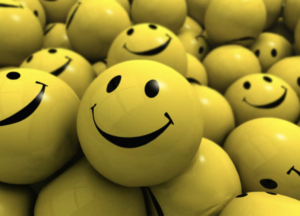“The surest sign of wisdom is a constant cheerfulness.” – Michel de Montaigne
Let me ask you a question, in the two weeks since Christmas, how many times has someone wished you happiness in the new year? It probably started on New Year’s Eve, when countless people said, “Happy New Year!”, but since then I’m certain more than one person has expressed their wish that you find happiness this year. Well, in the words of my mother, “If wishes were horses, then beggars would ride!” Simply wishing for happiness doesn’t work, nor is it a hidden treasure that we stumble upon. Happiness is most often discovered in its pursuit, and one of the most powerful tools we have to find it is already in our toolbox; it’s called cheerfulness.
There’s a difference between cheerfulness and happiness; they are related but distinct emotions. Cheerfulness typically refers to a lighthearted, positive mood characterized by a sense of optimism, contentment, and well-being. It’s often associated with a smile, laughter, and social interactions. According to UC Berkeley professor Timothy Hampton, “Cheerfulness is a psychological and emotional resource, a way of approaching actions and situations.” Happiness, on the other hand, is a broader term that often refers to a range of positive emotions, such as pleasure, contentment and fulfillment. Happiness can be a more long-lasting and deeper state of well-being that can come from a sense of purpose, personal growth, and meaningful connections with others. While cheerfulness is often a temporary state, happiness can be more enduring.
According to psychotherapist Tess Ridgeway, choosing to be cheerful doesn’t mean walking on air. Rather, it is a commitment to being a person who focuses on the good, looks for the best in people and recovers from bad events with a determination to carry on. Being cheerful can also be your gift to others. It can serve to spread positive energy and make those around you feel happier and more motivated. A cheerful attitude can also inspire others to be more optimistic and hopeful. Additionally, a cheerful person may be more likely to offer help and support to those in need.
On a more personal level, being cheerful can contribute to your health. It can:
- boost your immune system, making you more resistant to illnesses and infections.
- lower your stress levels and reduce your risk of stress-related conditions such as high blood pressure, heart disease, and stroke.
- improve your mental health by reducing symptoms of depression and anxiety and increasing feelings of well-being.
- promote better sleep, improve self-esteem, and help you to maintain a more positive outlook on life.
- help to improve your social life, it can lead to stronger relationships, more support and sense of belonging which also contribute to overall well-being.
It can also serve to help those around us. As we move into this new year, let’s stop wishing for a happy new year. Let’s use our cheerfulness tool to bring positive energy to those around us. Here are some easy first steps.
- Smile and make eye contact: A simple smile can go a long way in making others feel more comfortable and happy.
- Express gratitude: Demonstrating appreciation and thankfulness can make others feel valued. Give a compliment, send a thank-you note or give a small gift to someone to show your appreciation.
- Share positive news and messages: Share uplifting news articles, videos, or quotes that can inspire others and help to spread a positive message.
- Use humor: Telling jokes or sharing funny stories can lighten the mood and make people laugh.
- Be kind and compassionate: Showing empathy and understanding towards others can help to create a more positive and supportive environment.
- Show interest in and help others: Ask people about their lives, what they enjoy and what’s going on with them. Offer to help them with tasks or simply lend a listening ear.
- Practice random acts of kindness: Do something nice for someone unexpectedly, it could be as simple as holding the door open for someone or paying for someone’s coffee.
- Lead by example: Showing a cheerful and positive attitude yourself is one of the best ways to spread cheerfulness to others.
Cheerfulness is a choice we make; it is a resource of the self, an uptick in our emotional wellbeing that raises our energy levels briefly. Give it a try. If it all becomes too difficult, there is one final remedy found in medical books from the 16th-18th centuries, “Good conversation, one glass of wine – not two, because two leads to chattering – good music and a well-lit room. These things, we’re told, will all lead to a cheering of the self.” Here’s to a New Year, Cheers!
Embrace the Challenge.

